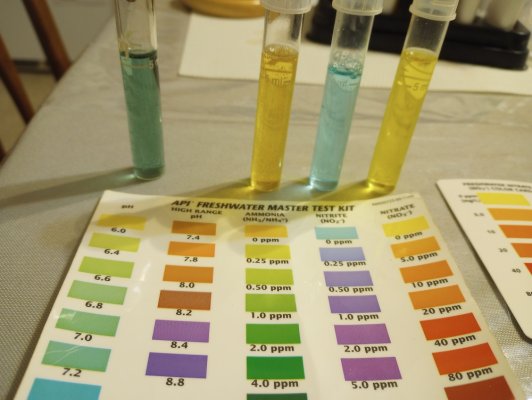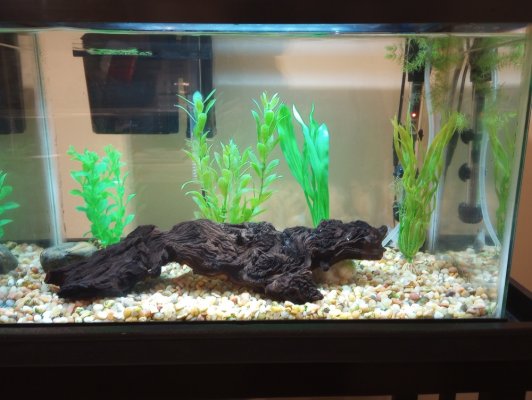larochem595
Aquarium Advice Activist
- Joined
- Oct 29, 2014
- Messages
- 149
Ugh...
I have no idea what is going on with my tank...
This is a well established tank that has been going for about 7 plus years.
I added 2 otos to my tank and they had stringy poo. I treated with prazi and removed carbon filtration per directions. I did two rounds. Filter is now back in. The fish look great.
But now my tank is registering nothing
No ammonia, no nitrates and no nitrites. pH is a comfortable 7ish.
I went out and bought a new api nitrate test kit because I didn't really believe it....This really baffles my mind. I do a weekly 20% change. If I had killed the good bacteria, I'd expect that ammonia or nitrites would be high but they aren't.
I am stumped. The good news--my fish all look good... The string oto poo looks to be gone...nothing too concerning.
Why is my tank reading nothing though? I am monitoring readings daily at this point.
If any wise people have encountered this, let me know.
Thanks,
Michelle
I have no idea what is going on with my tank...
This is a well established tank that has been going for about 7 plus years.
I added 2 otos to my tank and they had stringy poo. I treated with prazi and removed carbon filtration per directions. I did two rounds. Filter is now back in. The fish look great.
But now my tank is registering nothing
No ammonia, no nitrates and no nitrites. pH is a comfortable 7ish.
I went out and bought a new api nitrate test kit because I didn't really believe it....This really baffles my mind. I do a weekly 20% change. If I had killed the good bacteria, I'd expect that ammonia or nitrites would be high but they aren't.
I am stumped. The good news--my fish all look good... The string oto poo looks to be gone...nothing too concerning.
Why is my tank reading nothing though? I am monitoring readings daily at this point.
If any wise people have encountered this, let me know.
Thanks,
Michelle


